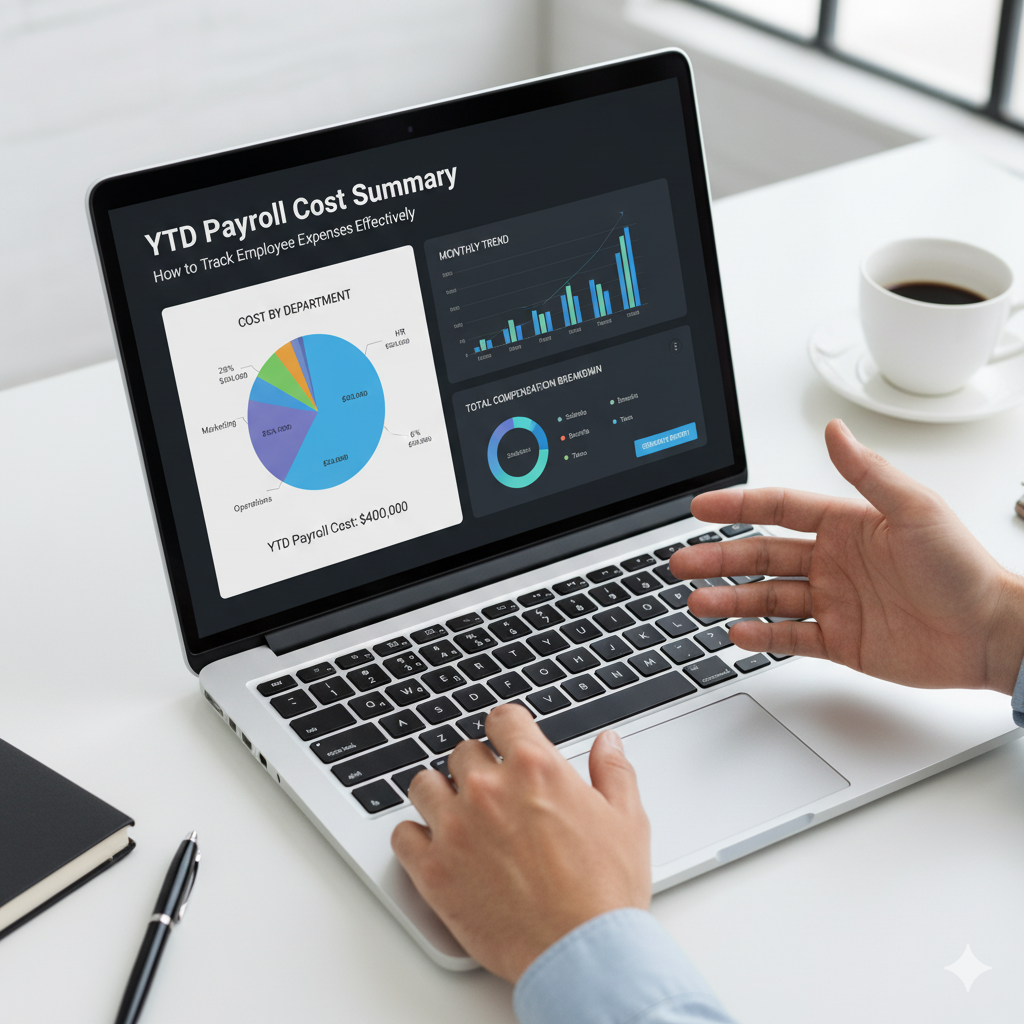Address
Kaypian, San Jose Del Monte City, Bulacan Philippines
Work Hours
Monday to Friday: 8AM - 6PM
Weekend: 10AM - 5PM
Address
Kaypian, San Jose Del Monte City, Bulacan Philippines
Work Hours
Monday to Friday: 8AM - 6PM
Weekend: 10AM - 5PM


Integrated HR. Accurate Payroll.


Integrated HR. Accurate Payroll.

Payroll is one of the biggest expenses for any business. But simply knowing your total payroll costs isn’t enough—you need a clear picture of where your money is going throughout the year. That’s where the Year-To-Date (YTD) Payroll Cost Summary comes in.
A YTD payroll cost summary helps employers, HR teams, and finance managers track employee-related expenses over time, ensuring accuracy, transparency, and better budget control. In this guide, we’ll explain what it is, why it matters, and how to use it to manage payroll expenses effectively.
A YTD Payroll Cost Summary is a report that shows the total payroll expenses a company has incurred from January 1 up to the latest payroll cycle.
It typically includes:
This summary gives businesses an accurate year-to-date snapshot of payroll costs, helping leaders make informed financial decisions.
Payroll costs often make up 40–60% of total business expenses. A YTD summary ensures you stay within budget allocations.
Breakdowns show exactly how much is spent on salaries, taxes, and benefits, improving accountability.
By analyzing payroll trends, businesses can decide whether to hire, restructure, or outsource.
Payroll records serve as proof for audits, tax filings, and compliance with government regulations.
Comparing payroll costs with revenue or departmental productivity helps measure return on investment (ROI) for labor.
A YTD Payroll Cost Summary is more than just a financial report—it’s a tool that empowers businesses to manage employee expenses, optimize budgets, and improve workforce planning. By regularly reviewing and analyzing payroll costs, companies can turn one of their largest expenses into a strategic advantage.
When tracked effectively, payroll isn’t just an overhead cost—it’s an investment in the people who drive your business forward.